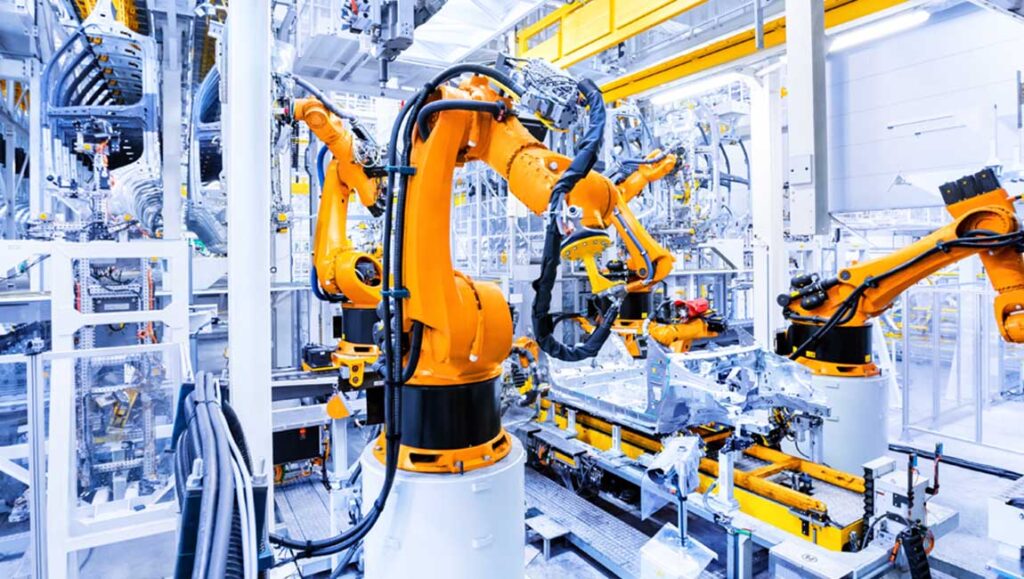The global industrial automation market, valued at approximately USD 200 billion in 2024, is projected to reach a staggering USD 570.4 billion by 2035, expanding at a CAGR of 10.3% over the next decade, according to a new report by Meticulous Research®. The growth underscores the rapid pace at which industries are embracing digital transformation, advanced robotics, and intelligent systems to remain competitive in an evolving global economy.
The primary catalyst behind this unprecedented expansion is the Industry 4.0 revolution, a convergence of IoT, artificial intelligence, machine learning, and big data analytics transforming traditional manufacturing into intelligent, optimising ecosystems. These technologies are empowering manufacturers to make real-time decisions, reduce waste, optimise output, and ensure higher quality and consistency in production processes.
Advanced digital tools such as digital twins, real-time monitoring systems, and self-regulating machinery are no longer experimental. They are becoming the new standard. Smart factories across sectors report productivity gains of up to 30%, with operational costs slashed by 25% through predictive maintenance and automated workflow optimisation.
The integration of artificial intelligence (AI) and machine learning (ML) into manufacturing has revolutionised automation. AI-enabled systems now detect anomalies in real time, optimise production parameters autonomously, and even predict equipment failures with over 90% accuracy.
Predictive maintenance, a standout application, is transforming asset management. By leveraging sensor-generated data and machine learning algorithms, facilities can preemptively service machinery, avoiding costly downtimes and reducing maintenance expenditures by up to 40%.
Computer vision, powered by deep learning, is also enhancing quality assurance processes, delivering inspection precision beyond human capabilities, achieving over 99.5% accuracy in high-speed defect detection.
Governments across the globe are actively fuelling the adoption of automation technologies through substantial policy support and investment programs:
- Germany’s Industrie 4.0
- China’s Made in China 2025
- India’s Production-Linked Incentive (PLI) Scheme
- The U.S. Advanced Manufacturing Partnership
These initiatives aim to modernise manufacturing infrastructure, support R&D, and lower the barriers for small and mid-sized enterprises (SMEs) to adopt cutting-edge technologies.
In emerging economies such as Vietnam, Brazil, and India, automation is increasingly seen as a lever for global competitiveness and economic modernisation. Subsidies, tax breaks, and policy incentives are helping these nations become attractive destinations for foreign manufacturing investment.
Among offerings, solutions, which include enterprise-level controls (ERP, PLM), plant-level controls (SCADA, DCS), and instrumentation, dominate the automation market. This is largely driven by a strategic push to digitise entire production chains, reduce manual intervention, and unlock predictive insights.

The implementation of robotics, especially collaborative robots (cobots) and vision systems, is central to this transition, bringing speed, precision, and adaptability to modern manufacturing.
By automation mode, semi-automatic systems continue to dominate due to their lower capital requirements and the need for operator oversight in critical tasks. However, the demand for fully automated systems is rising rapidly, especially in regions facing acute labor shortages and in sectors with high precision requirements, such as electronics and pharmaceuticals.
The oil & gas sector remains the largest consumer of automation technologies, thanks to its intensive need for process optimisation, safety compliance, and remote monitoring. Predictive systems and advanced sensors are proving crucial in improving operational resilience.
Meanwhile, the automotive sector is emerging as the fastest-growing end-user, fuelled by innovations in electric vehicles (EVs), autonomous driving, and modular assembly lines. Smart factories in this space are rapidly deploying AI, robotics, and edge computing to meet rising demand and evolving regulatory standards.
The Asia-Pacific (APAC) region is expected to dominate both current and future market growth. With leading economies like China, India, Japan, and South Korea investing heavily in infrastructure and smart manufacturing, the region is witnessing a rapid transformation of its industrial base.
China’s Made in China 2025 and India’s PLI scheme are catalysing automation adoption in automotive, electronics, and energy sectors. This, combined with favourable labor market dynamics and a strong push toward localisation, positions APAC as the automation growth engine of the future.
North America continues to hold substantial market share due to its strong technological foundation, particularly in advanced manufacturing, pharmaceuticals, and aerospace. Meanwhile, Latin America and parts of Southeast Asia are emerging as attractive frontiers, offering cost advantages and untapped market potential.
- Digital Twin Technology: Used for simulating and optimising production environments, digital twins are enabling smarter, more adaptive manufacturing processes.
- Edge Computing: Accelerating decision-making by processing data locally at the source, enhancing responsiveness and reliability in automation systems.
- 5G Connectivity: Ultra-low latency and high-speed data transfer are critical for the seamless operation of smart factories and real-time IoT networks.
- Sustainable Automation: Eco-efficient systems, circular manufacturing practices, and carbon footprint tracking are becoming integral as manufacturers align with global sustainability goals.
As industries around the globe strive for agility, sustainability, and resilience, industrial automation will be the cornerstone of future-ready manufacturing. The convergence of AI, robotics, edge computing, and cloud platforms is not just reshaping how factories operate, it’s redefining what is possible in the age of intelligent production.
With the market projected to nearly triple in size by 2035, businesses that embrace automation now will be best positioned to thrive in the next era of global industry.



